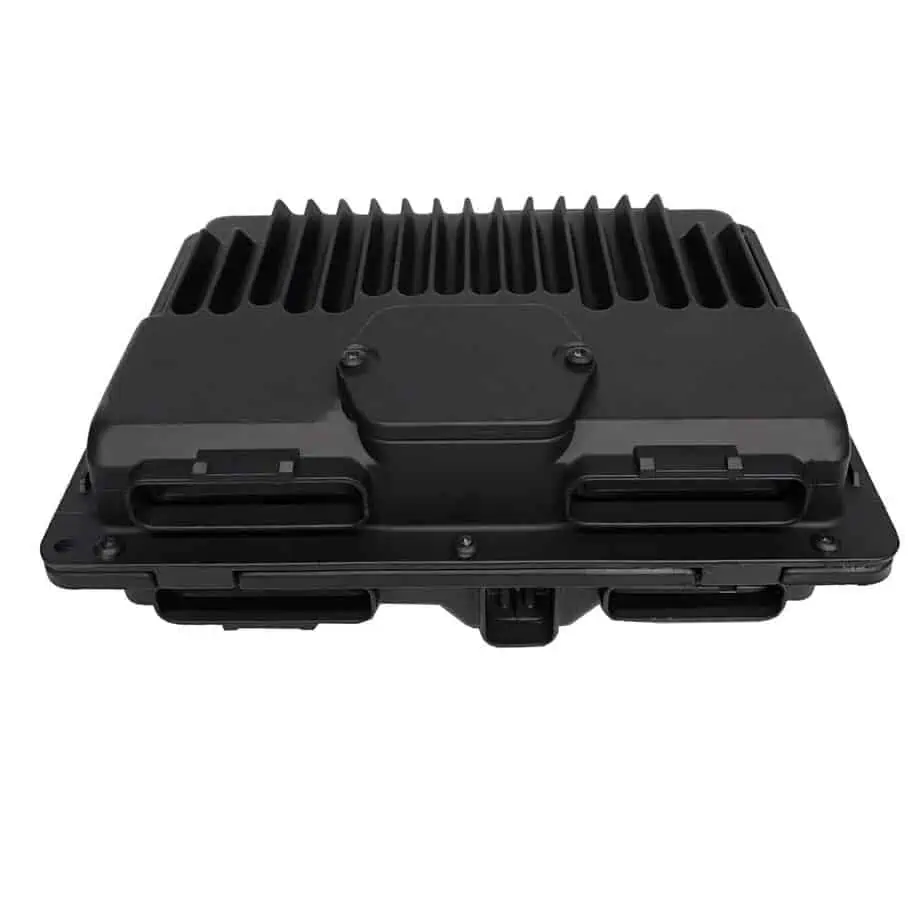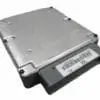Restore Your Van’s Performance and Reliability
Is your Chevrolet Express van or GM truck feeling sluggish, unpredictable, or just not right? A failing Powertrain Control Module (PCM) can be the hidden culprit behind a host of frustrating issues, from a persistent check engine light to poor fuel economy and stalling. This isn’t just an inconvenience; it’s a matter of reliability and peace of mind. Get back the dependable performance you count on with this fully programmed, direct-fit PCM, specifically prepared for your vehicle.
From the Shop Floor: The Case of the Stalling Work Van
I remember a contractor, Mark, who brought in his ’98 Savana. It was his livelihood, but it kept stalling at intersections. He was losing time, money, and customer trust. He’d replaced sensors and plugs, but the problem persisted. We traced it to a faulty internal processor in his PCM. Instead of a costly trip to the dealer, we installed one of these pre-programmed modules. The van fired right up, idled smooth as glass, and the stalling was gone. Mark was back on the job the same afternoon, relieved and confident in his vehicle again. That’s the power of getting the right part, ready to go.
Warning Signs Your PCM is Failing
Your vehicle’s PCM is its brain, controlling everything from fuel mixture to spark timing. When it starts to fail, the symptoms can be confusing. Here’s what to look for:
- ✔ Persistent Check Engine Light with codes like P0601, P0605, or other communication errors.
- ✔ Rough or erratic engine idle that you can’t seem to solve.
- ✔ Unexplained stalling or difficulty starting the engine.
- ✔ A noticeable drop in fuel efficiency.
- ✔ Harsh or incorrect automatic transmission shifting.
- ✔ The engine seems to have lost power and acceleration is weak.
Guided Installation to Restore Your 1998 Express 1500 PCM
We’ve made this repair as straightforward as possible by handling the programming for you. With a few basic tools, you can get your vehicle back to factory-spec performance. Follow these steps for a confident installation:
- Safety First: Disconnect the negative terminal from your vehicle’s battery and secure it away from the post to prevent any accidental reconnection.
- Locate the Module: On most GM trucks and vans from this era, the PCM is located in the engine bay, typically on the driver’s side inner fender or near the battery.
- Disconnect Wiring: Carefully unplug the electrical connectors from the old PCM. There are usually several multi-pin connectors with locking tabs. Be gentle with these tabs, as old plastic can be brittle.
- Remove the Old Unit: Unbolt the old PCM from its mounting bracket. Keep the hardware, as you may need to reuse it.
- Install the New PCM: Mount your new, pre-programmed PCM onto the bracket and secure it with the bolts.
- Reconnect and Secure: Firmly plug the wiring harnesses back into the new module until they click into place. Reconnect your vehicle’s battery terminal.
- Perform Security Relearn: Your vehicle’s anti-theft system (PassLock/VATS) will need to sync with the new PCM. This is a simple procedure that usually involves turning the key to the ‘ON’ position for 10-15 minutes, then off, and repeating two more times before starting the engine. Specific instructions can be easily found for your model.
Pro Tip: Check Your Grounds
Before installing the new module, take a moment to inspect and clean the main engine and chassis ground connections. A poor ground is a common cause of PCM failure and other electrical gremlins. A few minutes with a wire brush can save you a lot of future headaches and protect your new investment.
Tailored Fit for Your Ride
This module is a direct replacement for part numbers 16250279, 09366810, and 09355699. We guarantee compatibility for the following vehicles. Simply provide your VIN at checkout, and we’ll ensure it’s programmed with the latest GM software for your specific make and model.
- 1999 Cadillac Escalade
- 1998-1999 Chevrolet & GMC C/K 1500, 2500, 3500 Pickups (Gasoline)
- 1998-1999 Chevrolet & GMC Suburban 1500, 2500 (Gasoline)
- 1998-1999 Chevrolet Tahoe & GMC Yukon (Gasoline)
- 1998-1999 Chevrolet Astro & GMC Safari
- 1998 Chevrolet Express & GMC Savana 1500, 2500, 3500 Vans (Gasoline)
- 1998 Chevrolet S10 Blazer & GMC S15 Jimmy
- 1998 Chevrolet S10 & GMC Sonoma (4.3L V6)
- 1998 Oldsmobile Bravada
- 1998 GMC Envoy
- 1998 Isuzu Hombre (4.3L V6)
Do I need to do any programming or flashing myself?
Absolutely not. The main benefit of our service is that we program the module for you before it ships. Just provide your vehicle’s VIN during or after checkout, and we’ll load the latest, most stable GM software specific to your vehicle. It arrives ready for installation and the security relearn procedure.
What is the VIN and why do you need it?
The VIN (Vehicle Identification Number) is your car’s unique 17-digit serial number. It contains vital information about your vehicle’s engine, transmission, and factory options. We use it to ensure the software we load onto the PCM is an exact match for your vehicle’s configuration, guaranteeing proper function and compatibility.
Will this fix my specific check engine light codes?
This PCM is a definite solution for internal module fault codes like P0601 (Internal Control Module Memory Check Sum Error) or P0605 (Internal Control Module ROM Error). It can also resolve a wide range of performance-related codes if the root cause is a faulty module. However, it’s always best to diagnose other sensors and wiring first to rule them out.
Is the security relearn procedure difficult?
Not at all! It’s a simple process that requires no special tools. For most GM vehicles of this era, it involves cycling the ignition key in a specific timed sequence. This allows your vehicle’s anti-theft system to recognize and sync with the new PCM. You can easily find the exact steps for your model online or in a repair manual.
Where is the PCM located on my 1998 Express Van?
On the 1998 Chevrolet Express 1500, the Powertrain Control Module is typically found in the engine compartment on the driver’s side, mounted to the inner fender wall, often close to the battery.


